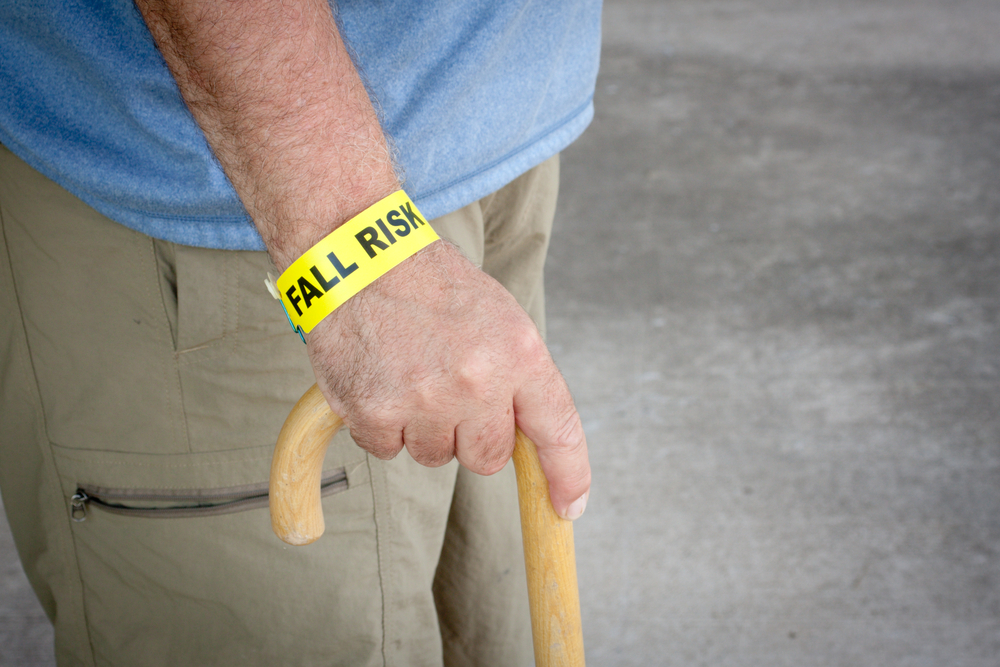CHICAGO, IL – Many nursing home residents are unable to do basic tasks like moving from their bed to wheelchair and require nursing home staff to assist them. According to the Centers for Medicare & Medicaid Services (CMS), a fall is an episode in which a resident lost his/her balance or would have fallen if it were not for staff interventions. An estimated 10 to 25 percent of falls among long-term residents result in a fracture, laceration, or need for hospital care.
Even if a resident follows all of their doctor’s orders and completed rehabilitation and physical therapy, it’s likely that they will not be as mobile as they were prior to their fall. Although it’s impossible to prevent every fall in a nursing home, many falls can be prevented.
Statistics on Falls and Fractures in Nursing Homes
According to Nursing Home Abuse Center, some common statistics on falls in nursing homes include:
- About 35% of injuries due to falls occur in residents who do not ambulate.
- The average rate of falls is 2.6 falls per person in any given year.
- About 5% of U.S. adults aged 65 and older reside in a nursing home facility, but deaths due to falls by nursing home residents make up 20% of deaths in the same age group.
- Between 50% to 75% of nursing facility residents fall each year. This is twice as high as someone who is the same age but lives in the community.
- In a typical year, a nursing home with 100 residents reports 100-200 falls.
- About 2% to 6% of falls result in a fracture.
- Roughly 1,800 individuals living in a nursing facility die from falls in any given year.
Ways to Prevent Nursing Home Falls
There are many precautions that can be taken to prevent fall injuries from occurring in nursing home facilities. Each resident should complete a risk assessment that includes a past history of accidents and falls, medications taken, and general physical health.
Nursing home staff should be overly attentive to residents. Proper equipment, like wheelchairs or walkers, should always be made available for nursing home residents whenever they need assistance walking. These residents should also receive proper foot care, shoes, and appropriate walking aids.
All staff members should also be trained on fall prevention strategies, as well as the risks that come with fall injuries.
Nursing homes should never have environmental hazards including rugs that can be tripped over, poor lighting, or wet floors.
Bed rails and bed heights should be properly in place and should work correctly, as nearly 30% of nursing home falls are due to faulty bed rails and incorrect bed heights.
Finally, nursing homes should offer programs such as physical therapy, stretching and balancing to all residents. Although this may not help with falls, it will help improve strength and balance which can lessen injuries should a fall occur.
What Can Happen After A Fall Injury?
Fall injuries for elderly individuals can be detrimental to their health, and even deadly. Elderly individuals are more likely to break bones during falls because of porous, fragile bones. Common injuries after a fall may include:
- Broken bones, such as wrist, arm, ankle, or hip fractures
- Head injuries which can be very serious, especially if the person is taking medication (i.e., blood thinners)
- Fear of falling, even if the individual was not injured when they fell. This fear may cause an individual to cut back on everyday activities; however, when this person becomes less active, their bones become weaker and thus, increases their chances of falling
What Conditions Make You More Likely to Fall?
Research has identified risk factors that may make individuals more likely to suffer from a fall. Many risk factors can be modified to help prevent falls, including:
- Vitamin D deficiency
- Lower body weakness
- Difficulty with walking and balance
- Vision problems
- Foot pain or poor footwear
- Use of medications, such as tranquilizers, sedatives, or antidepressants. Some over-the-counter (OTC) medicines can alter your balance and how steady you are on your feet.
- Some hazards, such as broken or uneven steps and rugs that can be tripped over
Many falls are a combination of risk factors; likewise, the more risk factors a person faces, the greater their chances of falling will be.
Taking the Right Steps to Prevent Falls
If you take care of your overall health, you may lower your chances of falling. A few tips to avoid falls and broken bones include:
Strength & Balance Exercises
Exercises that make your legs stronger will also improve your overall balance. Tai Chi is a great example of this type of exercise.
Have Your Eyes Checked
Have your eyes checked by an eye doctor at least once per year and update your eyeglasses if necessary. If you have bifocal or progressive lenses, you may want to consider getting a pair of glasses with only your distance prescription for outdoor activities, such as walking. These types of lens can make things seem closer or farther away than they are.
Consult with Your Doctor
Ask your doctor or health provider to evaluate your risk for falling and ask them specific things you can do to prevent falls. You should also ask them to review your medications, both OTC and prescribed, to see if any you take can make you dizzy or sleepy. In addition, ask about taking Vitamin D supplements.
Contact an Experienced Nursing Home Neglect Attorney in Cook County, Illinois
If your loved one has been hurt to due a fall injury, this may be a sign the nursing home staff is neglecting them. Contact one of our skilled nursing home negligence attorneys at Dinizulu Law Group for a free consultation today. Our attorneys know when your loved one isn’t being treated fairly and work hard to seek the justice your loved one deserves. Call our office at (312) 384-1920 today or visit our website for more information.



